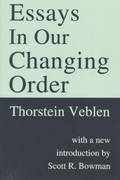Question
Suppose the behavior of the broad-money supply process in the banking system of a hypothetical economy is characterized by the following supply (Rs) and demand
Suppose the behavior of the broad-money supply process in the banking system of a hypothetical economy is characterized by the following supply (Rs) and demand for cash reserves (Rd) model [in which all the relevant variables are as defined in class]:
Rs = MB = Rd = C + BCRT(equilibrium condition);
BCRT = RR + ER (definition of total bank reserves)
C = 0.25D (currency holdings of the non-bank public)
RR = RRd + RRt[total desired cash reserves against bank deposits]
RRd = 0.05D (desired cash reserves against demand deposits)
RRt = 0.02T (desired cash reserves against term deposits)
T = 0.8D (definition of term deposits)
ER = ER d + ER t[total idle excess reserves held against bank deposits]
ERd = 0.002D(idle excess reserves held against demand deposits)
ERt = 0.001T (idle excess reserves held against term deposits).
Given that the economy is facing severe unemployment pressures, the government implements an expansionary fiscal policy to stimulate the economy by decreasing taxes and, as an indirect effect, the currency/deposit ratio (c), drops to 20%.
Under the relevant assumptions, use the Monetarist ISGT/LM framework to determine and explain the long run effects of the total policy package on the general equilibrium level of income (Y) and the level of the interest rate (R) in this economy.
Step by Step Solution
There are 3 Steps involved in it
Step: 1

Get Instant Access to Expert-Tailored Solutions
See step-by-step solutions with expert insights and AI powered tools for academic success
Step: 2

Step: 3

Ace Your Homework with AI
Get the answers you need in no time with our AI-driven, step-by-step assistance
Get Started


